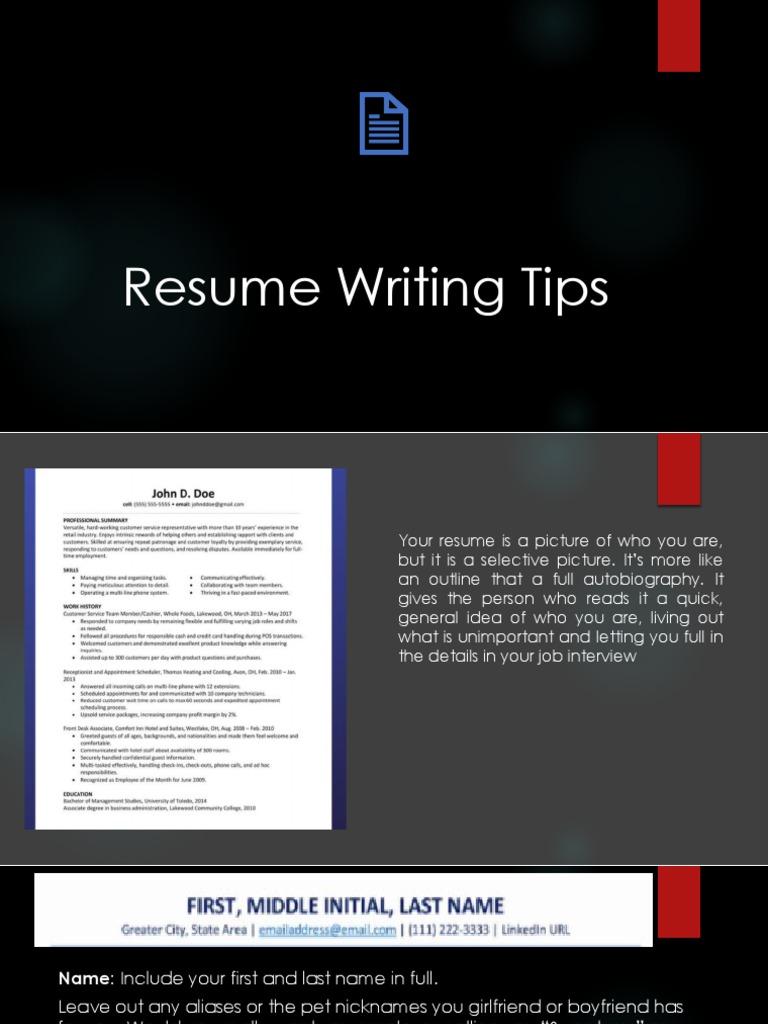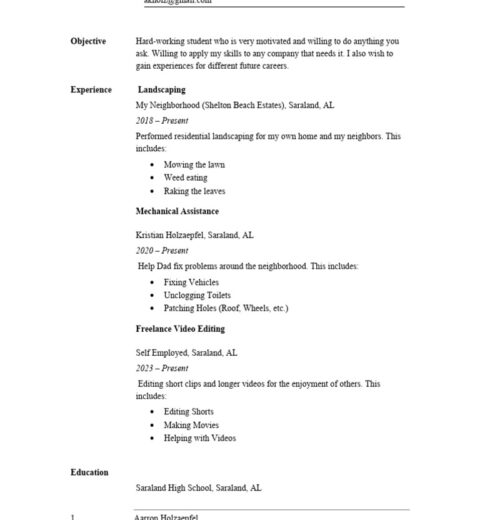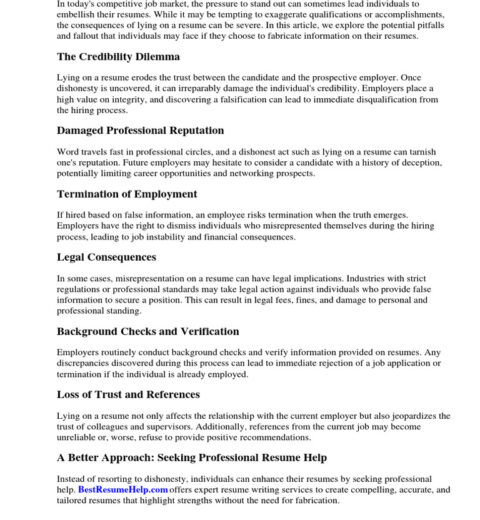Crafting a resume is akin to composing a symphony—a delicate balance of melody and rest, rhythm and pause, all woven together into a harmonious whole. Each resume tells a story, an artistic portrayal of one’s professional journey, endowed with the power to captivate potential employers. Navigating the intricacies of resume writing is not merely about listing experiences; it’s about curating an eloquent narrative that underscores both skills and ambitions in a compelling manner.
To embark on this journey of creation, one must first grasp the fundamental components that comprise a good resume. A resume should encapsulate key sections such as contact information, an objective statement or summary, work experience, education, skills, and additional sections pertinent to the individual’s background. Each section serves as a note in the resume’s melody, contributing to the overall symphony of one’s professional persona.
The contact information is the overture, setting the stage for what is to follow. Ensure that your name stands prominently at the top, followed by your phone number, email address, and a link to your professional online presence, such as a LinkedIn profile. This accessibility invites potential employers to reach out, making them part of your narrative.
Next, consider the objective statement or professional summary as the introduction to your symphony. This brief, yet poignant, statement should encapsulate who you are, your career aspirations, and what you can offer to the prospective employer. Rather than a mere declaration, let this be a hook—a compelling call to action that captures the hiring manager’s attention and entices them to delve deeper into your qualifications.
When it comes to detailing work experience, think of it as the crescendo of your composition. Each role you’ve held should be articulated with precision, capturing the essence of your responsibilities and achievements. Use bullet points for clarity and brevity, focusing on tangible accomplishments rather than mere duties. For instance, instead of stating “Responsible for managing a team,” one might articulate, “Led a team of ten to achieve a 25% increase in productivity within six months, enhancing overall operational efficiency.” This kind of specificity paints a vivid picture and underscores your impact.
Incorporating quantifiable metrics creates an undeniable resonance, transforming your experiences from mundane to memorable. Recruiters are drawn to results, so whenever possible, assign numbers to your achievements. Did you increase sales? By what percentage? Did you reduce costs? By how much? These details are the vibrant colors that illuminate your professional masterpiece.
Education, like the underlying harmonies of a musical piece, acts as a foundational element. List your degrees, certifications, and relevant courses that bolster your qualifications for the position. If your educational background is particularly impressive or relevant, consider placing it near the top of the resume to attract attention. If you are a recent graduate, your education should take precedence over work experience until you’ve amassed a wealth of professional achievements.
Equally significant is the skills section, which functions as the punctuation in your composition. This section offers a succinct list of both hard and soft skills applicable to the role you are pursuing. To enhance the impact of this section, carefully tailor your skills to align with the job description you are targeting. Use keywords from the job listing, as many companies utilize Applicant Tracking Systems (ATS) that filter resumes based on this terminology.
Moreover, consider incorporating additional sections such as volunteer work, awards, and professional affiliations. These components enrich your narrative, providing a fuller picture of who you are as a candidate. They offer opportunities to demonstrate character and initiative, inviting employers to envision the potential for cultural fit within their organization.
As you create this symphony of your professional life, attention to formatting is essential. Opt for a clean, professional layout that allows for easy navigation. Consistent fonts, clear headings, and an appropriate balance of white space enhance readability. Avoid excessive use of bold or italics; let the content speak for itself. A well-structured resume acts as a visual representation of your organization and professionalism.
Furthermore, the significance of tailoring each resume for specific roles cannot be overstated. Just as a musician may alter their composition for different audiences, so too should candidates adapt their resumes to meet varying job requirements. Take the time to analyze the job description and incorporate relevant experiences and keywords into your narrative. This bespoke approach demonstrates a genuine interest in the position and a commitment to meeting the employer’s needs.
Lastly, before sending your masterpiece into the world, don’t underestimate the power of revision and feedback. Much like rehearsing a symphony, multiple drafts refine your work, eliminating errors and enhancing clarity. Seek trustworthy individuals to critique your resume, offering fresh perspectives that may illuminate aspects you initially overlooked. This scrutiny can elevate your composition to new heights.
In conclusion, a well-crafted resume is not merely a document; it is a carefully orchestrated composition designed to resonate with potential employers. Each section interplays thoughtfully with the next, creating a narrative that encapsulates your professional journey. By following these tips and embracing the artistry of resume writing, you can produce a compelling presentation of your qualifications that captivates audiences and opens doors to new opportunities.




